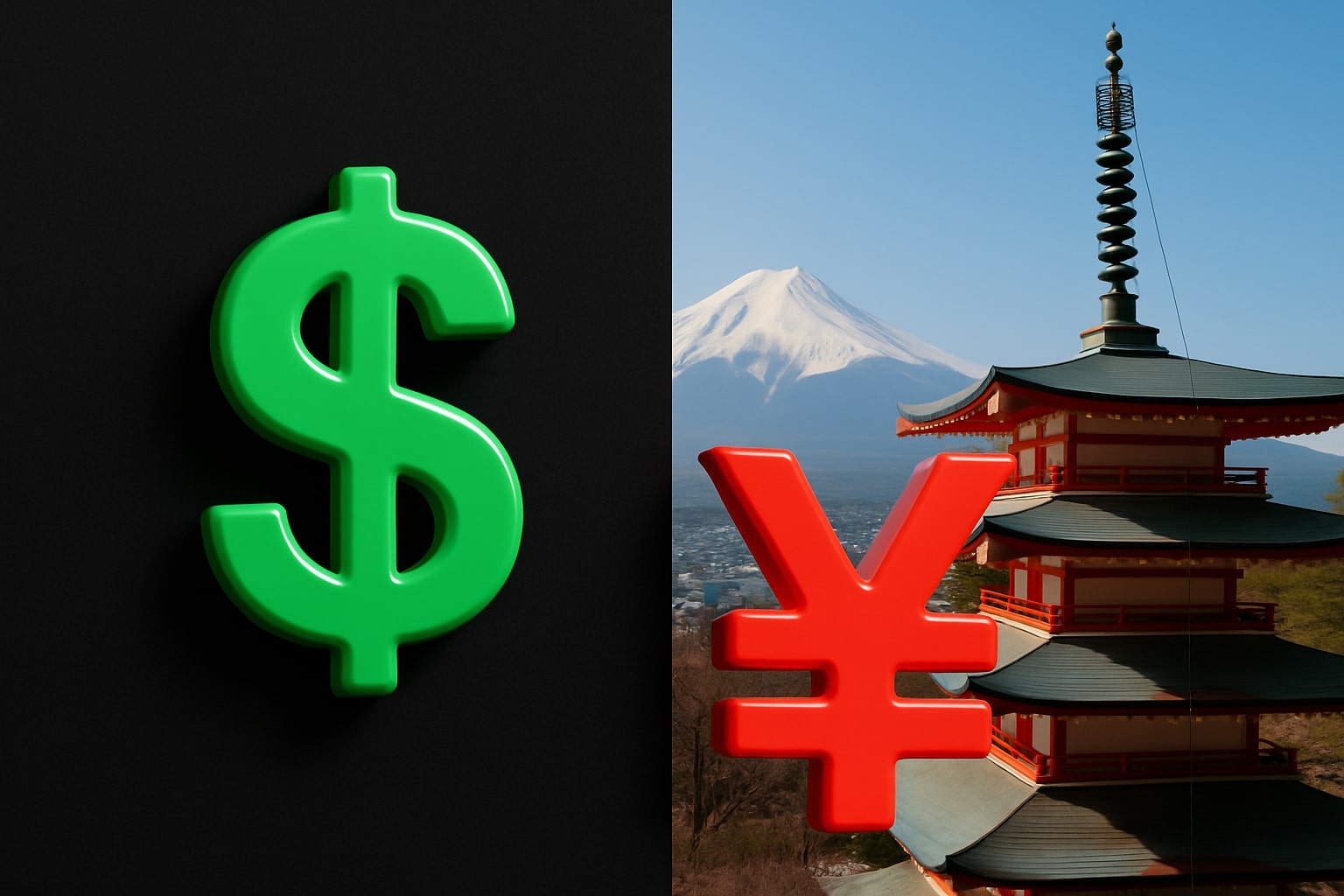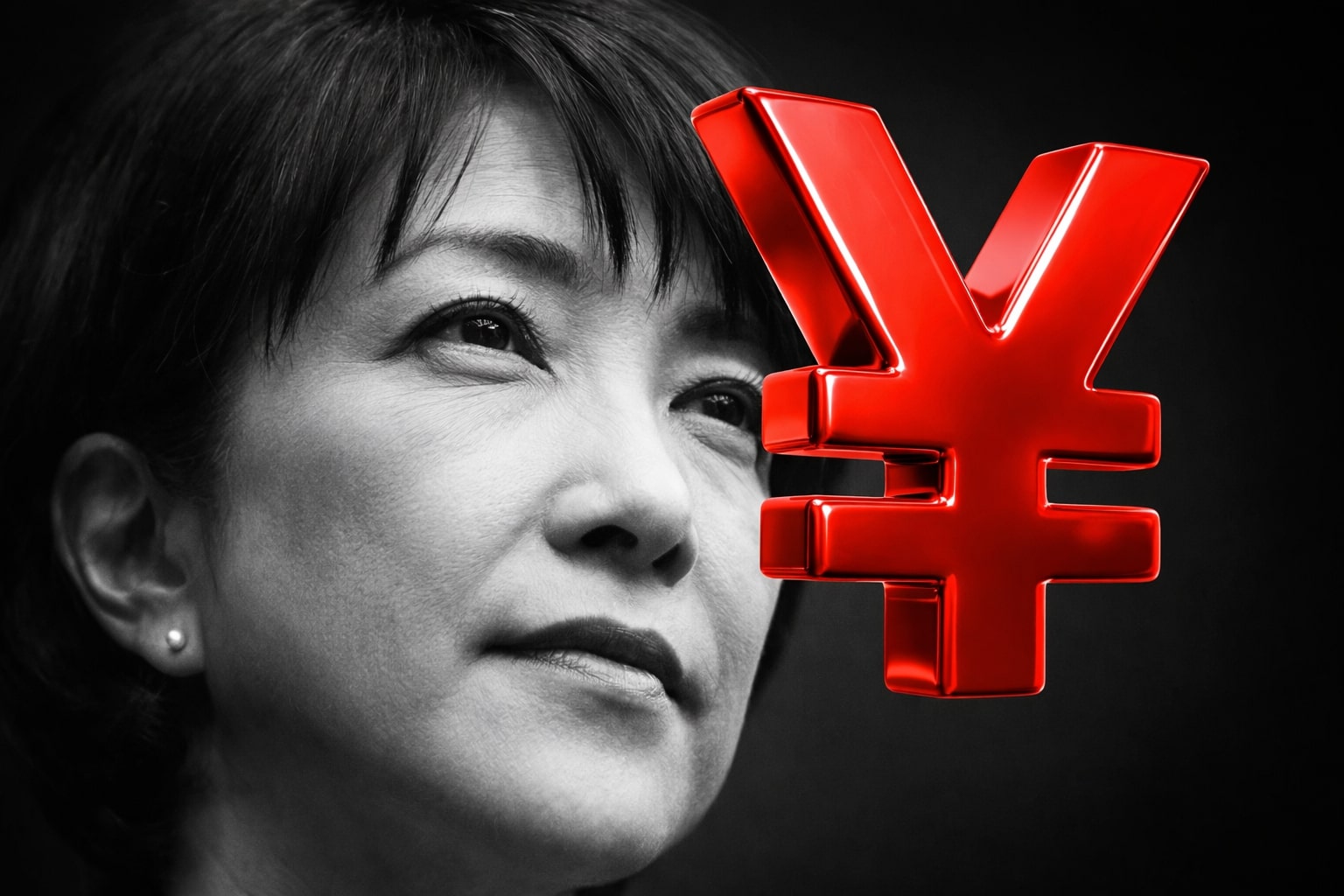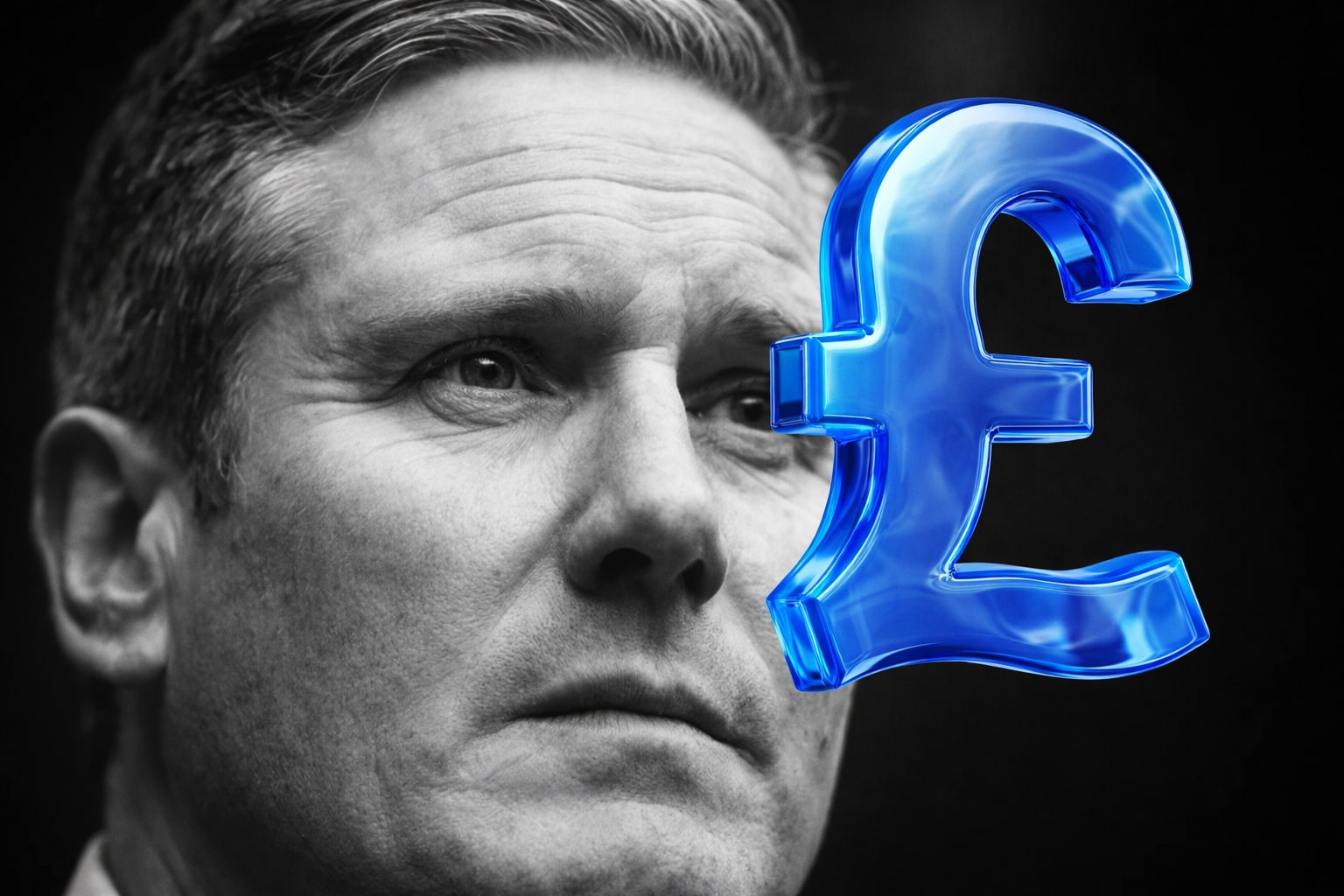USD/JPY Weakens to 153.80 as Tokyo Inflation Hits 2.8%, BoJ Policy Pressure Mounts, and Yen Intervention Threats Resurface
The Japanese Yen extended its recovery against the U.S. dollar, with USD/JPY slipping toward ¥153.80 after hitting an eight-month high at ¥154.45 earlier this week. The pair lost 0.3% on Friday after fresh Tokyo inflation data and renewed warnings from Japan’s Finance Ministry reignited expectations of potential market intervention. The move came as the Bank of Japan (BoJ) held rates steady at 0.50%, even as domestic inflation accelerated and political signals pointed to a larger fiscal expansion under new Prime Minister Sanae Takaichi. Meanwhile, the U.S. Dollar Index (DXY) traded near 99.80, supported by hawkish Federal Reserve commentary that temporarily capped yen gains.
Tokyo Inflation Surges, Forcing BoJ Into a Tight Corner
October data showed that Tokyo’s core consumer price index (CPI) rose 2.8% year-on-year, marking the sharpest increase in four months and surpassing consensus expectations of 2.6%. The broader CPI also printed at 2.8%, up from 2.5% in September. The steady rise in Tokyo inflation, a leading national indicator, reinforces speculation that headline inflation could remain above the BoJ’s 2% target into early 2026. BoJ Governor Kazuo Ueda acknowledged that “underlying inflation pressures remain strong,” though he reiterated a cautious stance on further rate hikes. Market pricing via overnight swaps now places a 55% probability of a 25-basis-point increase in December — up from 50% earlier this week.
Yen Finds Support as Japan’s New Finance Minister Signals Intervention Readiness
Japan’s Finance Minister Satsuki Katayama issued her strongest warning to date against “rapid and one-sided currency moves,” pledging that authorities are “closely monitoring markets with a high sense of urgency.” The statement, coming after USD/JPY’s surge beyond ¥154.40, revived speculation that the Ministry of Finance (MoF) could coordinate with the BoJ for direct intervention should the yen weaken toward ¥155.00–¥156.00. Historically, similar remarks have preceded intervention, notably during the October 2022 sell-off when USD/JPY was near ¥151.94. Traders now consider the ¥155.00 level a “red line” for policy action, especially as domestic inflation builds and political pressure intensifies to defend household purchasing power.
BoJ Holds Rates at 0.50% But Internal Division Widens
The BoJ’s latest policy meeting revealed a 7–2 split, with board members Naoki Tamura and Hajime Takata advocating for a hike to 0.75%, underscoring growing internal dissent. While the official stance remains accommodative, the bank’s quarterly outlook upgraded both GDP and inflation projections through fiscal 2026, expecting core inflation above 2% well into March 2027. This evolution marks a subtle policy shift — the BoJ is no longer treating inflation as transitory. Yet Ueda remains cautious, saying, “We will spend more time assessing wage trends and the impact of higher food and energy costs before deciding the next step.” Market participants read this as a delay tactic, suggesting any rate move may now come in January 2026 rather than December.
New Prime Minister Sanae Takaichi’s Fiscal Push and Market Implications
Prime Minister Sanae Takaichi, Japan’s first female leader, announced plans for an expansive stimulus package exceeding ¥13.9 trillion ($92 billion) to shield households from rising costs and stabilize small businesses. Her “Abenomics-style” fiscal expansion is designed to support domestic growth but risks weakening the yen further by widening the fiscal-monetary divergence with the U.S. The package includes direct cash transfers, corporate tax cuts, and infrastructure spending, echoing the pro-growth approach of late Prime Minister Shinzo Abe. For traders, this fiscal push suggests near-term downward pressure on the yen unless the BoJ counters with a faster normalization pace.
U.S. Dollar Strength Limits Yen Upside Amid Fed’s Hawkish Stance
While Japanese fundamentals turned more hawkish, U.S. policy developments helped the dollar stay resilient. Following the Federal Reserve’s latest 25-basis-point rate cut, Chair Jerome Powell emphasized that a December cut is “not a certainty.” The statement trimmed dovish expectations, with the CME FedWatch Tool showing the probability of another cut dropping from 91.1% to 66.6% in less than a week. The U.S. 10-year Treasury yield stabilized near 4.37%, supporting USD/JPY’s short-term bounce. Fed officials Lorie Logan, Beth Hammack, and Raphael Bostic are scheduled to speak later Friday, and any reinforcement of Powell’s hawkish tone could trigger renewed buying above ¥154.30.
Technical View: Momentum Fades But Structure Remains Bullish
Technically, USD/JPY remains in an established uptrend, but short-term indicators show exhaustion. The pair trades well above its 21-day moving average at ¥151.85 and 100-day at ¥148.14, maintaining a bullish structure. However, the RSI at 66.2 shows a mild bearish divergence — prices printed new highs while momentum failed to confirm. Immediate resistance sits at ¥154.80, followed by ¥155.53, which marks February’s cycle high. On the downside, ¥153.00 remains the first key support, aligning with the 21-day average. A break below that could extend the correction toward ¥151.50–¥152.00, with a decisive fall below ¥151.00 flipping near-term sentiment bearish.
Tokyo Retail Sales Recovery Adds Policy Complexity
September retail sales rose 0.3% month-on-month, reversing August’s 1.1% decline and signaling consumer resilience despite inflation. Given that private consumption accounts for 55% of Japan’s GDP, the rebound complicates the BoJ’s dovish position. Sustained consumption at these levels could accelerate wage negotiations in early 2026, reinforcing inflation persistence. The labor market remains tight, with unemployment steady at 2.6%, suggesting upward wage pressure remains intact. These conditions heighten the likelihood that the BoJ may face a dual challenge: controlling inflation without derailing consumption — a scenario that often supports a stronger yen.
Political Stability and Market Sentiment
Takaichi’s historic leadership has bolstered investor confidence in Japan’s fiscal continuity but introduced fresh uncertainty about long-term monetary coordination. Markets broadly view her coalition with the Japan Innovation Party as market-friendly, given its pro-business reforms and commitment to free secondary education and tax relief. Equity investors have responded positively, with the Nikkei 225 holding above 38,500, but currency traders remain cautious that prolonged stimulus could undermine yen stability. The Ministry of Finance’s verbal warnings suggest policymakers are acutely aware of these trade-offs as USD/JPY trades near intervention thresholds
Fed–BoJ Policy Divergence Sets the Tone
The widening policy gap between the Federal Reserve and Bank of Japan continues to dominate USD/JPY direction. While the Fed signals “longer-for-higher” rates, Japan’s cautious approach and fiscal expansion magnify the yield differential, maintaining structural support for the dollar. However, with Japanese inflation surprising to the upside and intervention threats rising, traders are now bracing for a short-term correction before the broader uptrend resumes. If the BoJ pivots earlier than expected, USD/JPY could retest ¥151.00, but a continuation of ultra-loose policy may reopen the path toward ¥155.50–¥156.00 by year-end.
Verdict on USD/JPY
The short-term tone for USD/JPY has shifted from aggressively bullish to moderately corrective as macro and technical signals converge. Tokyo inflation’s rise to 2.8%, combined with political pressure and verbal intervention risks, creates a near-term ceiling around ¥155.00. Yet, the Fed’s hawkish stance and Japan’s fiscal expansion prevent a sustained yen recovery. As long as support at ¥153.00 holds, the broader trend remains upward, with potential retests of ¥154.80 and ¥155.50. The pair is best rated Hold/Bullish Bias, with short-term corrections likely before renewed upside into December
That's TradingNEWS




















